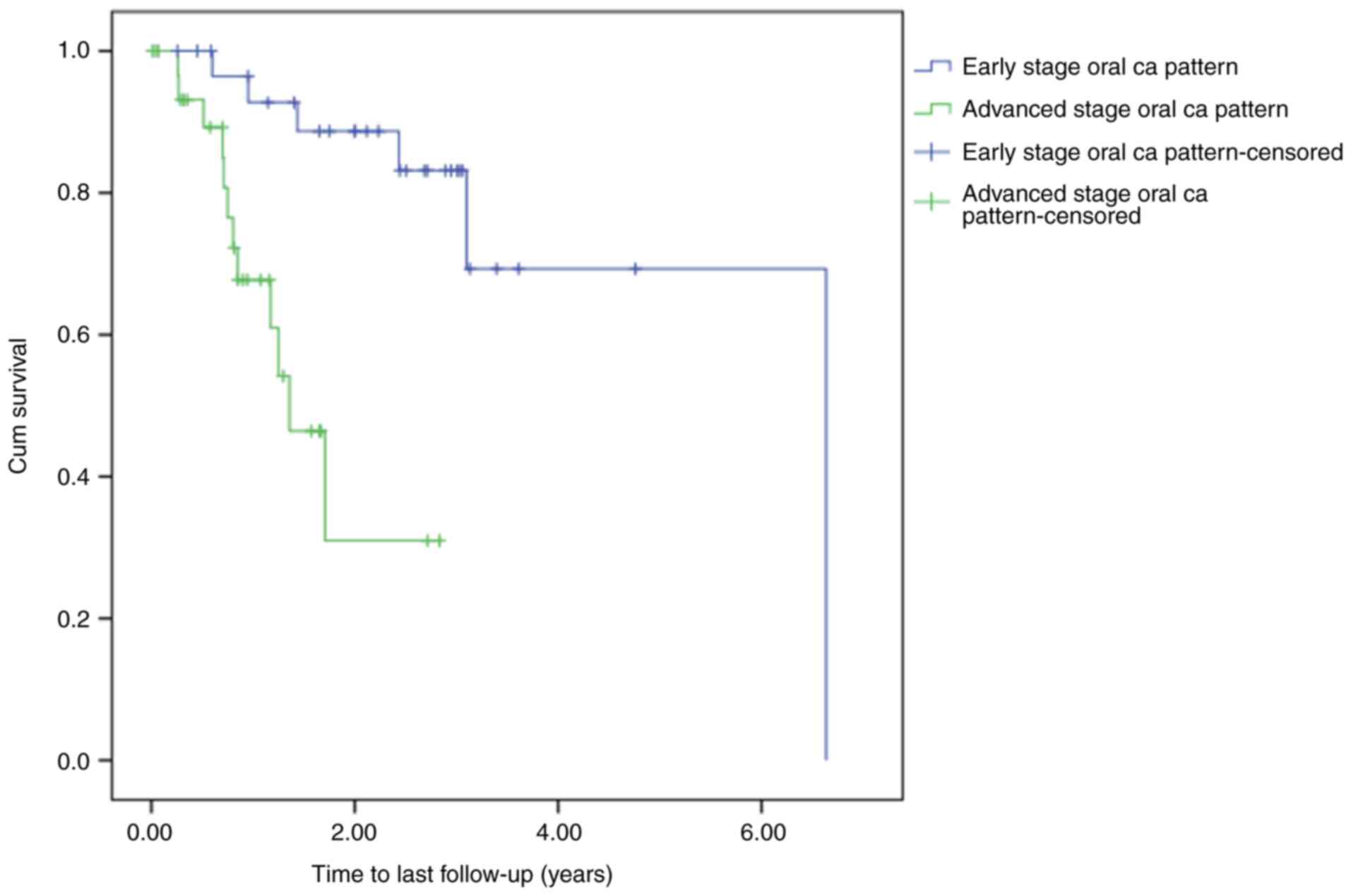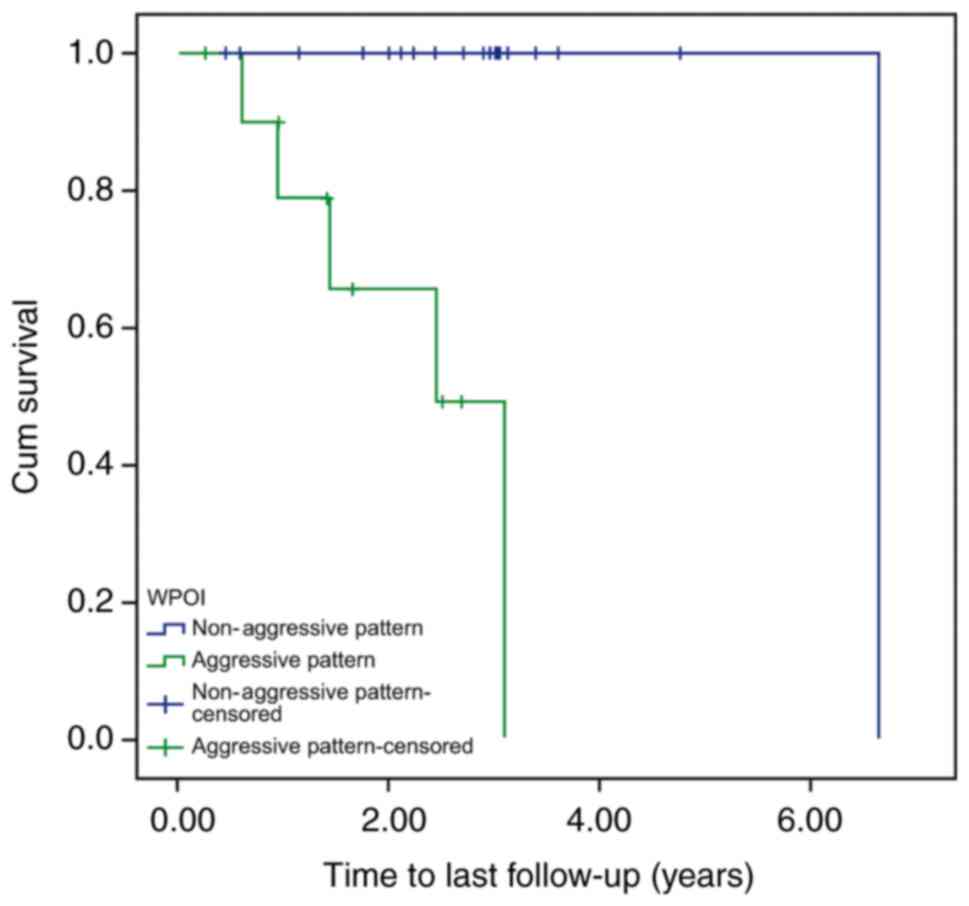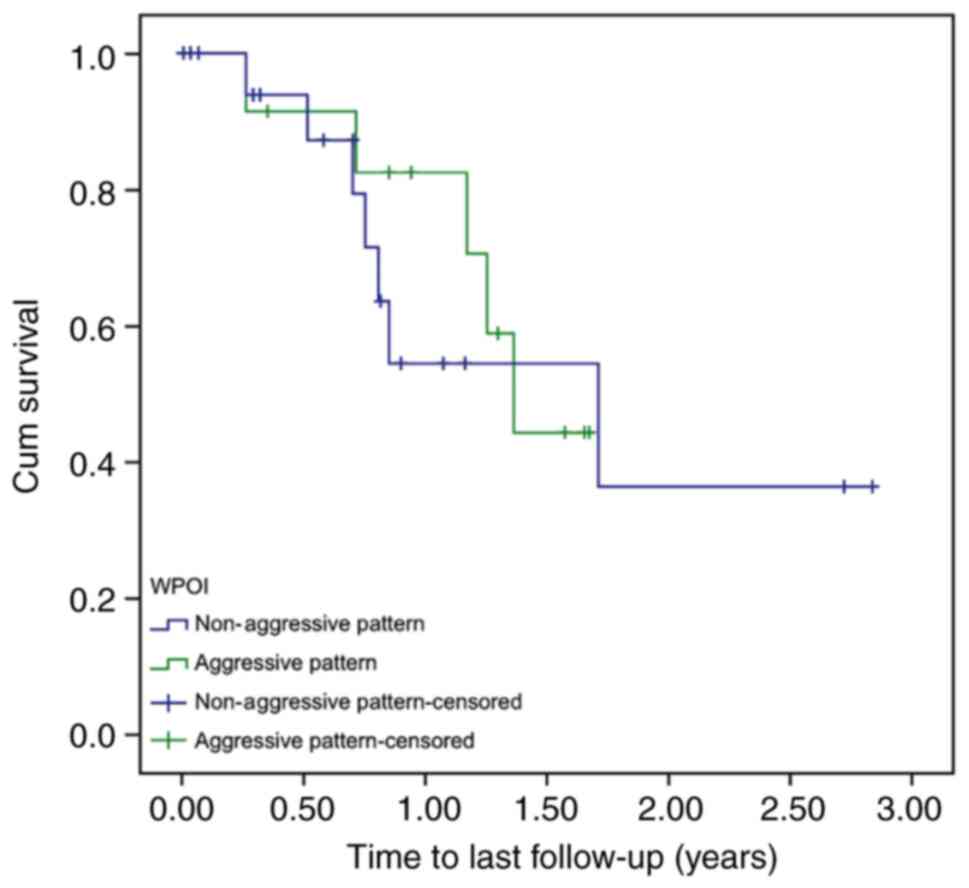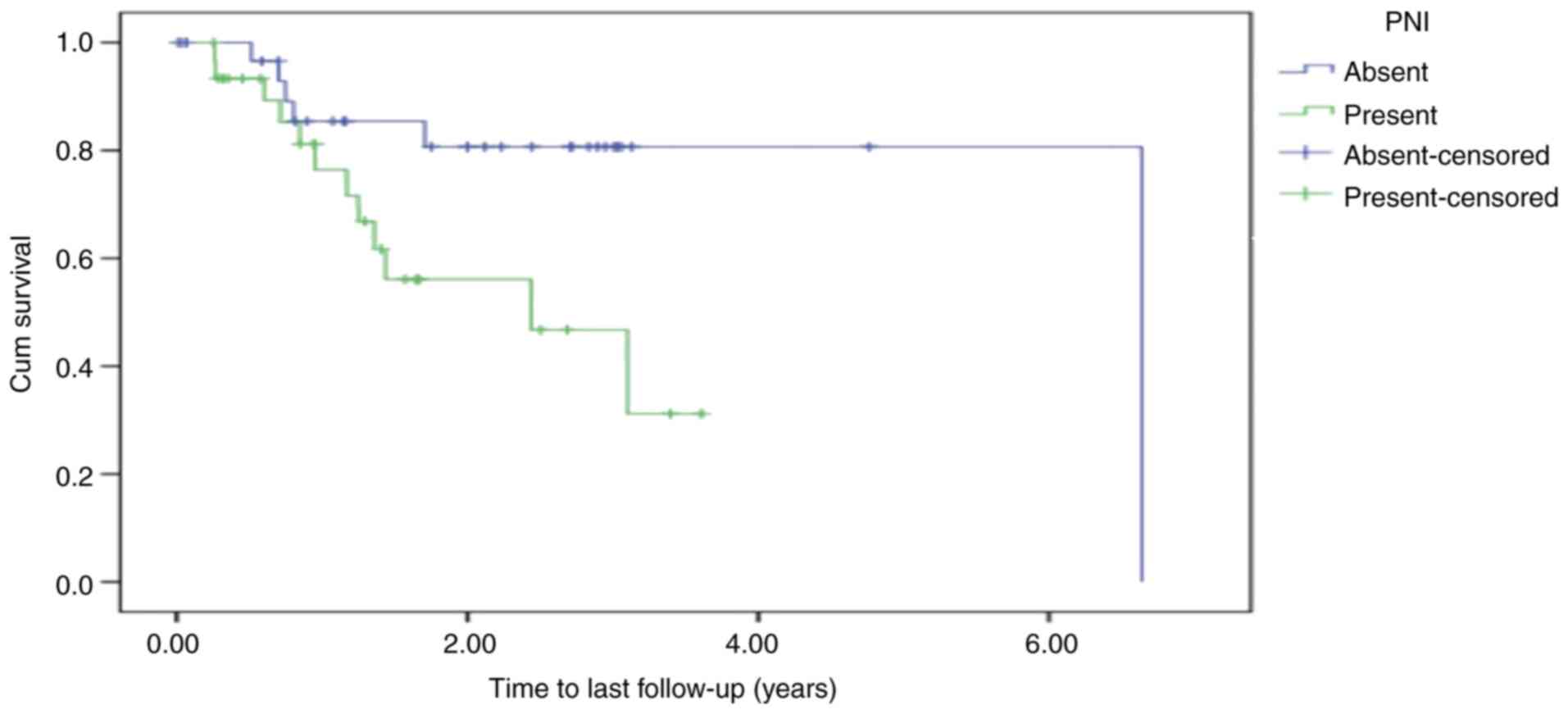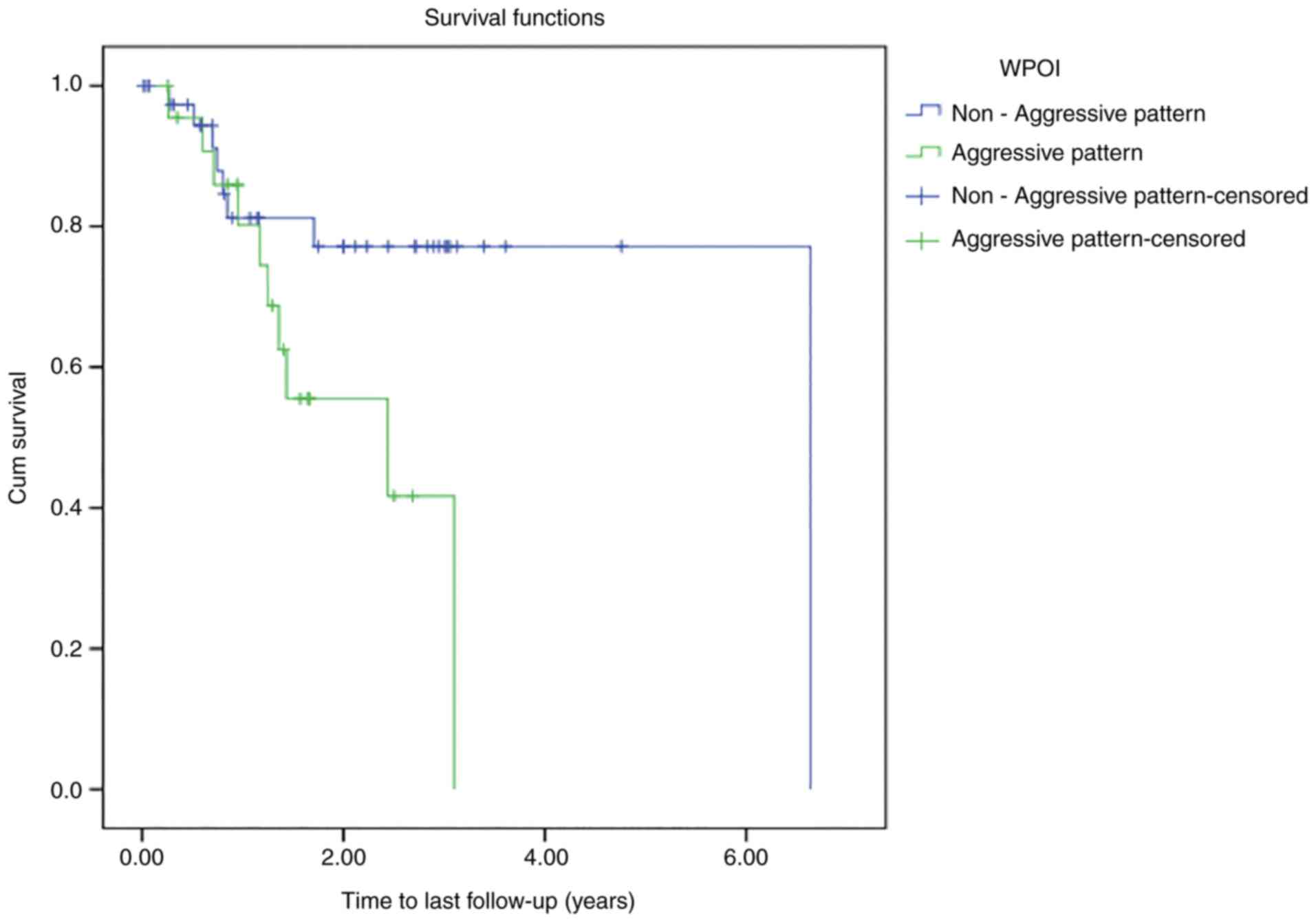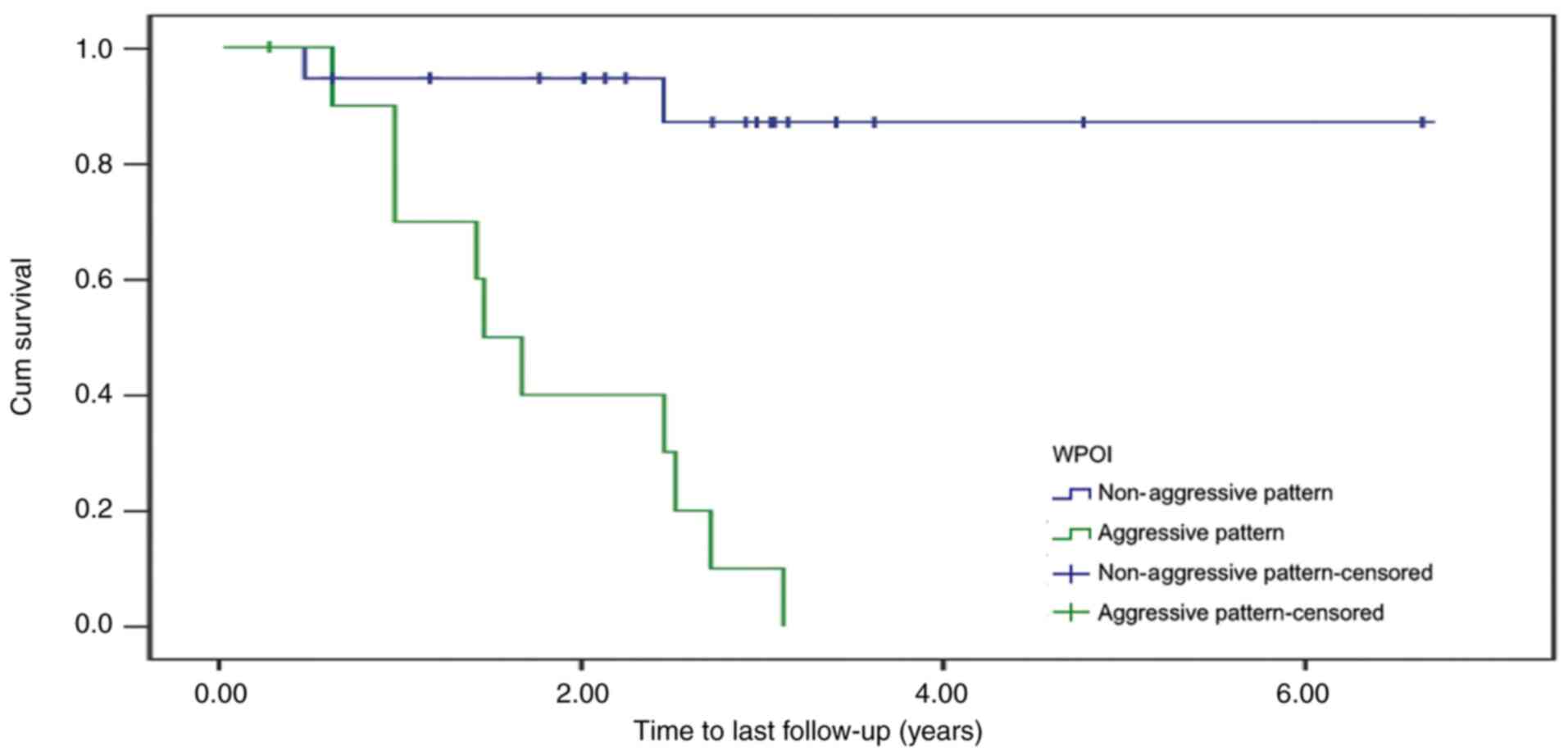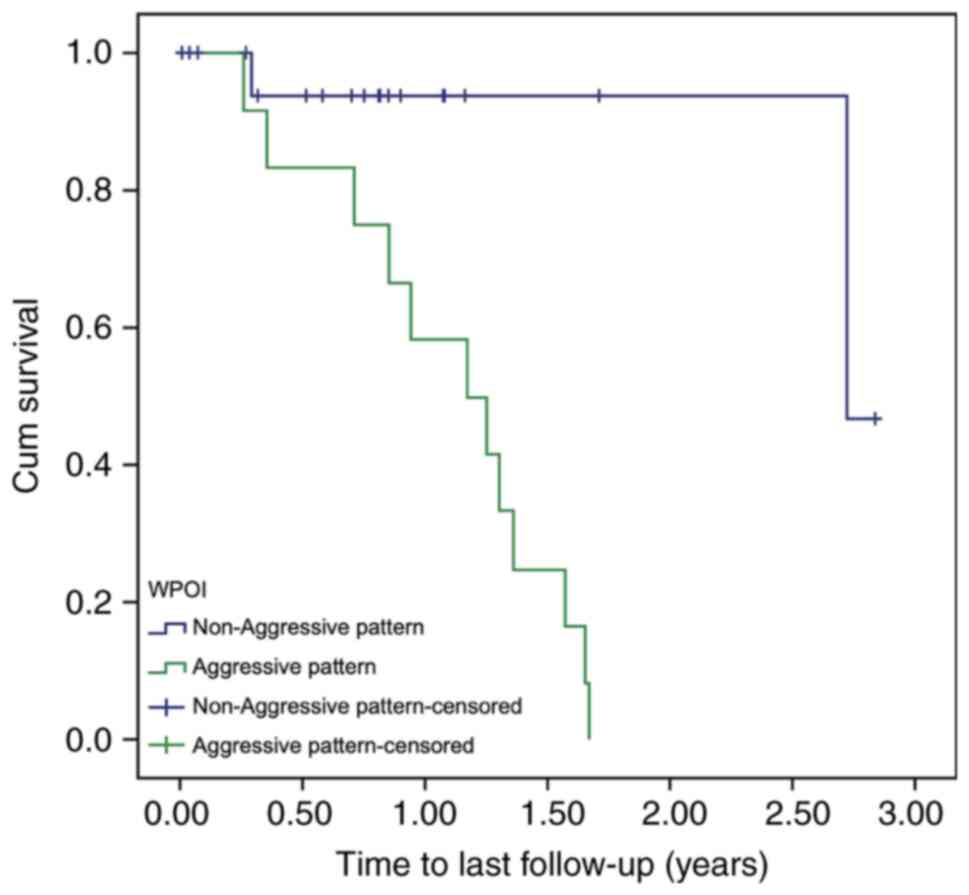|
1
|
Silverman S Jr: Demographics and
occurrence of oral and pharyngeal cancers. The outcomes, the
trends, the challenge. J Am Dent Assoc. 132 (Suppl):7S–11S. 2001.
View Article : Google Scholar : PubMed/NCBI
|
|
2
|
Swango PA: Cancers of the oral cavity and
pharynx in the United States: An epidemiologic overview. J Public
Health Dent. 56:309–318. 1996. View Article : Google Scholar : PubMed/NCBI
|
|
3
|
Chen JK, Katz RV and Krutchkoff DJ:
Intraoral squamous cell carcinoma. Epidemiologic patterns in
Connecticut from 1935 to 1985. Cancer. 66:1288–1296. 1990.
View Article : Google Scholar : PubMed/NCBI
|
|
4
|
Silverman S Jr and Gorsky M: Epidemiologic
and demographic update in oral cancer: California and national
data-1973 to 1985. J Am Dent Assoc. 120:495–499. 1990. View Article : Google Scholar : PubMed/NCBI
|
|
5
|
Llewellyn CD, Johnson NW and
Warnakulasuriya KA: Risk factors for squamous cell carcinoma of the
oral cavity in young people-a comprehensive literature review. Oral
Oncol. 37:401–418. 2001. View Article : Google Scholar : PubMed/NCBI
|
|
6
|
Chen YK, Huang HC, Lin LM and Lin CC:
Primary oral squamous cell carcinoma: An analysis of 703 cases in
southern Taiwan. Oral Oncol. 35:173–179. 1999. View Article : Google Scholar : PubMed/NCBI
|
|
7
|
Silverman S Jr: Epidemiology. Silverman S
Jr: Oral Cancer. 4th edition. Hamilton, ON, Canada: B C Decker
Inc.; pp. 1–6. 1998
|
|
8
|
Johnson NW, Jayasekara P and Amarasinghe
AA: Squamous cell carcinoma and precursor lesions of the oral
cavity: Epidemiology and aetiology. Periodontol. 2000.57:19–37.
2011. View Article : Google Scholar : PubMed/NCBI
|
|
9
|
Jones KR, Lodge-Rigal D, Reddick RL, Tudor
GE and Shockley WW: Prognostic factors in the recurrence of stage I
and II squamous cell cancer of the oral cavity. Arch Otolaryngol
Head Neck Surg. 118:483–485. 1992. View Article : Google Scholar : PubMed/NCBI
|
|
10
|
Woolgar JA: Histopathological
prognosticators in oral and oropharyngeal squamous cell carcinoma.
Oral Oncol. 42:229–239. 2006. View Article : Google Scholar : PubMed/NCBI
|
|
11
|
Massano J, Regateiro FS, Januário G and
Ferreira A: Oral squamous cell carcinoma: Review of prognostic and
predictive factors. Oral Surg Oral Med Oral Pathol Oral Radiol
Endod. 102:67–76. 2006. View Article : Google Scholar : PubMed/NCBI
|
|
12
|
Binmadi NO and Basile JR: Perineural
invasion in oral squamous cell carcinoma: A discussion of
significance and review of the literature. Oral Oncol.
47:1005–1010. 2011. View Article : Google Scholar : PubMed/NCBI
|
|
13
|
Brandwein-Gensler M, Smith RV, Wang B,
Penner C, Theilken A, Broughel D, Schiff B, Owen RP, Smith J, Sarta
C, et al: Validation of the histologic risk model in a new cohort
of patients with head and neck squamous cell carcinoma. Am J Surg
Pathol. 34:676–688. 2010. View Article : Google Scholar : PubMed/NCBI
|
|
14
|
Sessions DG, Spector GJ, Lenox J, Haughey
B, Chao C and Marks J: Analysis of treatment results for oral
tongue cancer. Laryngoscope. 112:616–625. 2002. View Article : Google Scholar : PubMed/NCBI
|
|
15
|
World Health Organization (WHO)
classification, . (4th edition). 2017.
|
|
16
|
O'Sullivan B, Huang SH, Su J, Garden AS,
Sturgis EM, Dahlstrom K, Lee N, Riaz N, Pei X, Koyfman SA, et al:
Development and validation of a staging system for HPV-related
oropharyngeal cancer by the International Collaboration on
Oropharyngeal cancer Network for Staging (ICON-S): A multicentre
cohort study. Lancet Oncol. 17:440–451. 2016. View Article : Google Scholar : PubMed/NCBI
|
|
17
|
Maleki S, Schlecht NF, Keller C, Diaz J,
Moss J, Prystowsky MB, Macian F and Brandwein-Gensler M:
Lymphocytic host response to oral squamous cell carcinoma: An
adaptive T-cell response at the tumor interface. Head Neck Pathol.
5:117–122. 2011. View Article : Google Scholar : PubMed/NCBI
|
|
18
|
Morse DE, Psoter WJ, Cleveland D, Cohen D,
Mohit-Tabatabai M, Kosis DL and Eisenberg E: Smoking and drinking
in relation to oral cancer and oral epithelial dysplasia. Cancer
Causes Control. 18:919–929. 2007. View Article : Google Scholar : PubMed/NCBI
|
|
19
|
Krishna Rao SV, Mejia G, Roberts-Thomson K
and Logan R: Epidemiology of oral cancer in Asia in the past
decade-an update (2000–2012). Asian Pac J Cancer Prev.
14:5567–5577. 2013. View Article : Google Scholar : PubMed/NCBI
|
|
20
|
Jakobsson PA, Eneroth CM, Killander D,
Killander D, Moberger G and Mårtensson B: Histologic classification
and grading of malignancy in carcinoma of the larynx. Acta Radiol
Ther Phys Biol. 12:1–8. 1973. View Article : Google Scholar : PubMed/NCBI
|
|
21
|
Anneroth G, Batsakis J and Luna M: Review
of the literature and a recommended system of malignancy grading in
oral squamous cell carcinomas. Scand J Dent Res. 95:229–249.
1987.PubMed/NCBI
|
|
22
|
Bryne M, Koppang HS, Lilleng R, Stene T,
Bang G and Dabelsteen E: New malignancy grading is a better
prognostic indicator than Broders' grading in oral squamous cell
carcinomas. J Oral Pathol Med. 18:432–437. 1989. View Article : Google Scholar : PubMed/NCBI
|
|
23
|
Bryne M, Jenssen N and Boysen M:
Histologic grading in the deep invasive front of T1 and T2 glottic
squamous cell carcinomas has high prognostic value. Virchows Arch.
427:277–281. 1995. View Article : Google Scholar : PubMed/NCBI
|
|
24
|
Mashberg A, Boffetta P, Winkelman R and
Garfinkel L: Tobacco smoking, alcohol drinking, and cancer of the
oral cavity and oropharynx among U.S. veterans. Cancer.
72:1369–1375. 1993. View Article : Google Scholar : PubMed/NCBI
|
|
25
|
Jovanovic A, Schulten EA, Kostense PJ,
Snow GB and van der Waal I: Tobacco and alcohol-related to the
anatomical site of oral squamous cell carcinoma. J Oral Pathol Med.
22:459–462. 1993. View Article : Google Scholar : PubMed/NCBI
|
|
26
|
Blot WJ, McLaughlin JK, Winn DM, Austin
DF, Greenberg RS, Preston-Martin S, Bernstein L, Schoenberg JB,
Stemhagen A and Fraumeni JF Jr: Smoking and drinking in relation to
oral and pharyngeal cancer. Cancer Res. 48:3282–3287.
1998.PubMed/NCBI
|
|
27
|
Lewin F, Norell SE, Johansson H,
Gustavsson P, Wennerberg J, Biörklund A and Rutqvist LE: Smoking
tobacco, oral snuff, and alcohol in the etiology of squamous cell
carcinoma of the head and neck: A population-based case-referent
study in Sweden. Cancer. 82:1367–1375. 1998. View Article : Google Scholar : PubMed/NCBI
|
|
28
|
Brandwein-Gensler M, Teixeira MS, Lewis
CM, Lee B, Rolnitzky L, Hille JJ, Genden E, Urken ML and Wang BY:
Oral squamous cell carcinoma: Histologic risk assessment, but not
margin status, is strongly predictive of local disease-free and
overall survival. Am J Surg Pathol. 29:167–178. 2005. View Article : Google Scholar : PubMed/NCBI
|
|
29
|
Chaturvedi A, Husain N, Misra S, Kumar V,
Gupta S, Akhtar N, Lakshmanan M, Garg S, Arora A and Jain K:
Validation of the Brandwein Gensler risk model in patients of oral
cavity squamous cell carcinoma in North India. Head Neck Pathol.
14:616–622. 2020. View Article : Google Scholar : PubMed/NCBI
|
|
30
|
Almangush A, Bello IO, Keski-Säntti H,
Mäkinen LK, Kauppila JH, Pukkila M, Hagström J, Laranne J, Tommola
S, Nieminen O, et al: Depth of invasion, tumor budding, and worst
pattern of invasion: Prognostic indicators in early-stage oral
tongue cancer. Head Neck. 36:811–818. 2014. View Article : Google Scholar : PubMed/NCBI
|
|
31
|
Bundgaard T, Rossen K, Henriksen SD,
Charabi S, Søgaard H and Grau C: Histopathologic parameters in the
evaluation of T1 squamous cell carcinomas of the oral cavity. Head
Neck. 24:656–660. 2002. View Article : Google Scholar : PubMed/NCBI
|
|
32
|
Hori Y, Kubota A, Yokose T, Furukawa M,
Matsushita T and Oridate N: Association between pathological
invasion patterns and late lymph node metastases in patients with
surgically treated clinical No early oral tongue carcinoma. Head
Neck. 42:238–243. 2020. View Article : Google Scholar : PubMed/NCBI
|
|
33
|
Guerra MFM, Gias LN, Campo FR and Perez
JS: Marginal and segmental mandibulectomy in patients with oral
cancer: A statistical analysis of 106 cases. J Oral Maxillofac
Surg. 61:1289–1296. 2003. View Article : Google Scholar : PubMed/NCBI
|
|
34
|
Woolgar JA, Rogers SN, Lowe D, Brown JS
and Vaughan ED: Cervical lymph node metastasis in oral cancer: The
importance of even microscopic extracapsular spread. Oral Oncol.
39:130–137. 2003. View Article : Google Scholar : PubMed/NCBI
|
|
35
|
Jones HB, Sykes A, Bayman N, Sloan P,
Swindell R, Patel M and Musgrove B: The impact of lymphovascular
invasion on survival in oral carcinoma. Oral Oncol. 45:10–15. 2009.
View Article : Google Scholar : PubMed/NCBI
|
|
36
|
Liu SA, Wang CC, Jiang RS, Lee FY, Lin WJ
and Lin JC: Pathological features and their prognostic impacts on
oral cavity cancer patients among different subsites-A singe
institute's experience in Taiwan. Sci Rep. 7:74512017. View Article : Google Scholar : PubMed/NCBI
|















